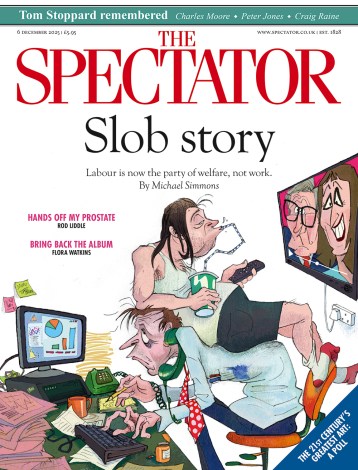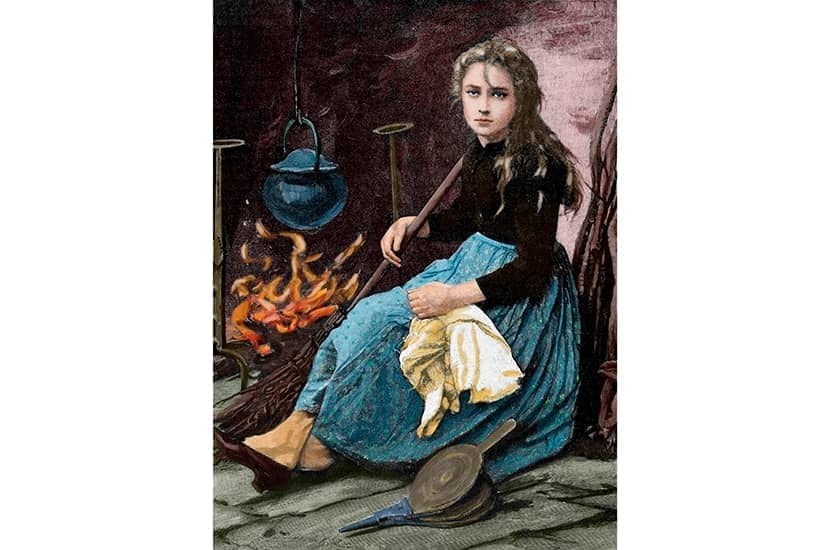Stories are fundamental to humanity and no one can guess how far back they go — long before they were first recorded, no doubt. As Thomas Mann says at the beginning of Joseph and his Brothers:
The further down into the lower world of the past we probe and press, the more do we find that the earliest foundations of humanity, its history and culture, reveal themselves unfathomable.
The existence in different cultures and remote places of tales similar to Cinderella, for instance, suggests ur-stories, common ancestors millennia old.
There is no accessing those original folk tales. All we can say is that they were already very deep-rooted when they first appeared in recorded culture. The routes by which they did so vary in nature and, apparently, in authority. Some have reached us through the sober investigations of anthropologists; some by discreditable means, through imaginative fakers, claiming their work as antique and quickly finding that spurious invention had the capacity for unbudge-able archetype. The story of Ali Baba, which seems to have been passed off as ancient by an 18th-century Syrian adventurer called Hanna Diyab, is one thing; the story of the Sleeping Beauty, already old when it started to make itself apparent in the Volsunga saga around 1000, is another. The only conclusion is that they both stuck, despite very different origins, because they correspond to some deep need in the human condition.
Andersen’s own stories are different to other fairy tales, being redemptive and not so concerned with punishment
Nicholas Jubber has written an interesting book about seven figures who brought the folk tale, or fairy tale as it is often called, to the attention of a literate public. Behind them lies a long oral history, about which we can only speculate. No one can doubt that each of them was approaching the material in very different ways, nor that they were handling what is basically the same material.
Two chapters are concerned with rediscovering the original oral witnesses that supplied better known distributors of folk material with stories. The first is Hanna Diyab, who worked with the first French translator of the Thousand and One Nights, Antoine Galland. The Nights has an extremely complicated textual history. Galland worked from a 14th- or 15th-century Syrian manuscript, much shorter than Egyptian texts. Diyab supplied him with extra tales. Some of these have become among the most popular and best remembered, including Ali Baba and Aladdin. Some of Diyab’s additions, such as Sindbad the Sailor, were taken from separate narratives, but in many cases no earlier version of these has been found. He may have been passing on some stories from an oral tradition, or he may conceivably have been inventing them. When Diyab’s autobiography was found and published in 2015, Aladdin was discovered to have some parallels with Diyab’s own life. The antiquity, or not, of the stories was beside the point.
The other shadowy source that Jubber investigates is Dortchen Wild, the wife of Wilhelm, the younger of the brothers Grimm. The Grimm brothers were conscious investigators of a national tradition in storytelling, and still represent what we understand by the folk tale. In their explorations of the German folk tale they were occupying much the same idealistic position as the students who set national unification going at the Wartburg in 1817.
The apparent conscientiousness of the Grimm brothers has sometimes obscured the fact that their sources for the Kinder- und Hausmärchen (Children’s and Household Tales) were few and restricted. The central sources for the first edition were two families, the Wilds and the Hassenpflugs, who were descended from French Protestants, and whose stories often have French antecedents. Rumpelstiltskin and Hansel and Gretel are Dortchen Wild’s; the Sleeping Beauty and Little Red Riding Hood the Hassenpflug sisters’. There is something to be said for Jubber’s approach in giving credit to the original tellers; but there is no doubt that the authorship and the genius is not Dortchen Wild’s, but the beauty and skill with which the brothers kept the vividness of an oral narration. It was they who were remarkable.
Other chapters are devoted to a proper anthropological collector of folk tales, in the form of the Russian folklore expert Ivan Khudiakov. It is to him that we owe the preservation of those thrillingly gruesome stories of Baba Yaga and the Firebird. Like many of these writers, Khudiakov had to face the prejudice that such vulgar tales were beneath the attention of educated society, and struggled to make himself heard. Even the Grimm brothers were initially regarded as dealing in puerile material, and, as Robert Irwin has shown in a first-rate book on the Thousand and One Nights, it is only within the last generation or two that the great collection has been regarded within the Arab world as worthy of study. (Europe was less dismissive: the narrator in Proust discusses the literary impact of different versions, and Galland is the only translator I can think of to have been awarded a statue.) In Khudiakov’s case, the lack of literary kudos, combined with suspicions of radical politics inherent in the study of the culture of the rural proletariat, led to exile and the collapse of his mental and physical health.
One question that Jubber rather avoids is the point at which folk tales stopped being read by adults and started to be aimed at children. In some cases, this affected individual texts (an example might be the curious bowdlerisation and simplification of Gulliver’s Travels). The first writer he considers, Giambattista Basile, the 17th-century Neapolitan author of Lo Cunto de li Cunti, — the Tale of Tales — was certainly not writing for children.
Gabrielle-Suzanne de Villeneuve’s romance La Belle et la Bête, first published in 1740, is particularly interesting for the place it marks on this journey from folk tale to children’s fairy story. The original is a lengthy French romance, in roughly the same exquisitely rococo mannered tradition of the Princesse de Clèves, but with marvellous and magical elements. Modern writers such as Angela Carter, who in her great story ‘Mr and Mrs Lyon’ gave us a fantastic variation for adults, are returning to the origins, rather than inverting matters.
The story really took off, however, when Jeanne-Marie de Beaumont published an abridgement of it for the use of schoolgirls in 1765. Subsequently, magic and fantasy started to drift away from fiction for adults, and the universal appeal of the myth moved upstairs to the nursery. By the time the last of Jubber’s writers, Hans Christian Andersen, began to publish, he was explicitly and apparently exclusively writing for children.
Andersen is a curiosity here. His best-remembered stories are those that he invented from scratch. There is no folk source for the Emperor’s New Clothes, the Steadfast Tin Soldier, the Little Match Girl or the Snow Queen, but by now they are deeply lodged in the collective subconscious. The oddity is that they are very unlike other folk tales, being redemptive in tone, and generally not concerned with punishment for wrongdoing.
The terrifying end of the Grimms’ the Goose Girl, with the false queen laying out the terms of her own sadistic punishment, and that of the Snow Queen with the splinter of ice melted and the children grown up and returned home, are such worlds apart from each other that you wonder what, in the end, Andersen was doing. The explanation may lie in his difficult personality, which exasperated many. After he stayed too long with Dickens in the summer of 1857, a notice was placed in the spare bedroom reading: ‘Hans Christian Andersen slept in this room for five weeks — which seemed to the family AGES!’ A more balanced personality could never have created the moments of extremity where not just Andersen’s tales, but folk tales in general, live.
The Fairy Tellers is an engaging and interesting book, about something only partly within the realm of study, and the author wisely concentrates on what may indeed be studied. I would have liked more about the different places of folk tales within different societies; and Jubber seems to end just when the story starts to become truly interesting. The scholars at the end of the 19th century who were applying the discipline of anthropology and the emerging concepts of narratology to the folk tale would have been worth his attention. Specifically, I would have recommended a chapter on the great Andrew Lang, whose extraordinary 12 volumes, beginning with The Blue Fairy Book, offer an unparalleled popular survey of worldwide folk tales, driven not just by anthropology but by ideas of imperial unity. The Brown Fairy Book, for instance, contains the Australian aboriginal tale of the Bunyip, retold from the dry pages of the Journal of the Anthropological Institute.
What has happened to the folk tale? No one seems to have carried out a study of the long-term effects on children’s development when a fairy tale-telling session is replaced by 20 minutes in front of Teletubbies. Fifty years ago, the cheapest way to keep your child quiet was to sit down and dredge up your memory of Rapunzel, Snow White or (in my grandmother’s case) the fairy tale-like plot of The Sound of Music.
Does this still happen? In patches, probably, but not universally. Jubber’s book shows the long-sustained value of these narratives, and should make us wonder what might happen to us if they disappeared from somewhere at the back of our brains.






Comments